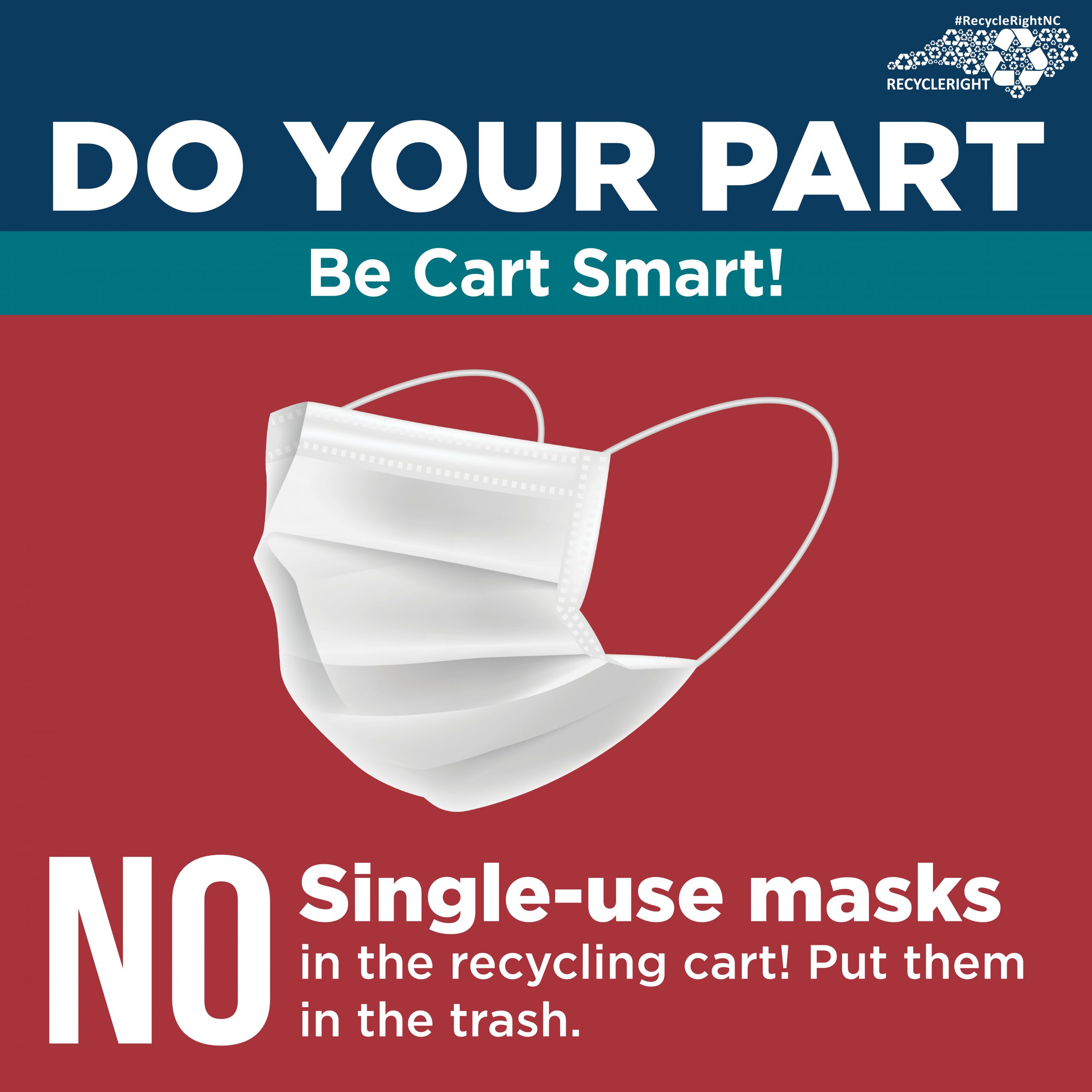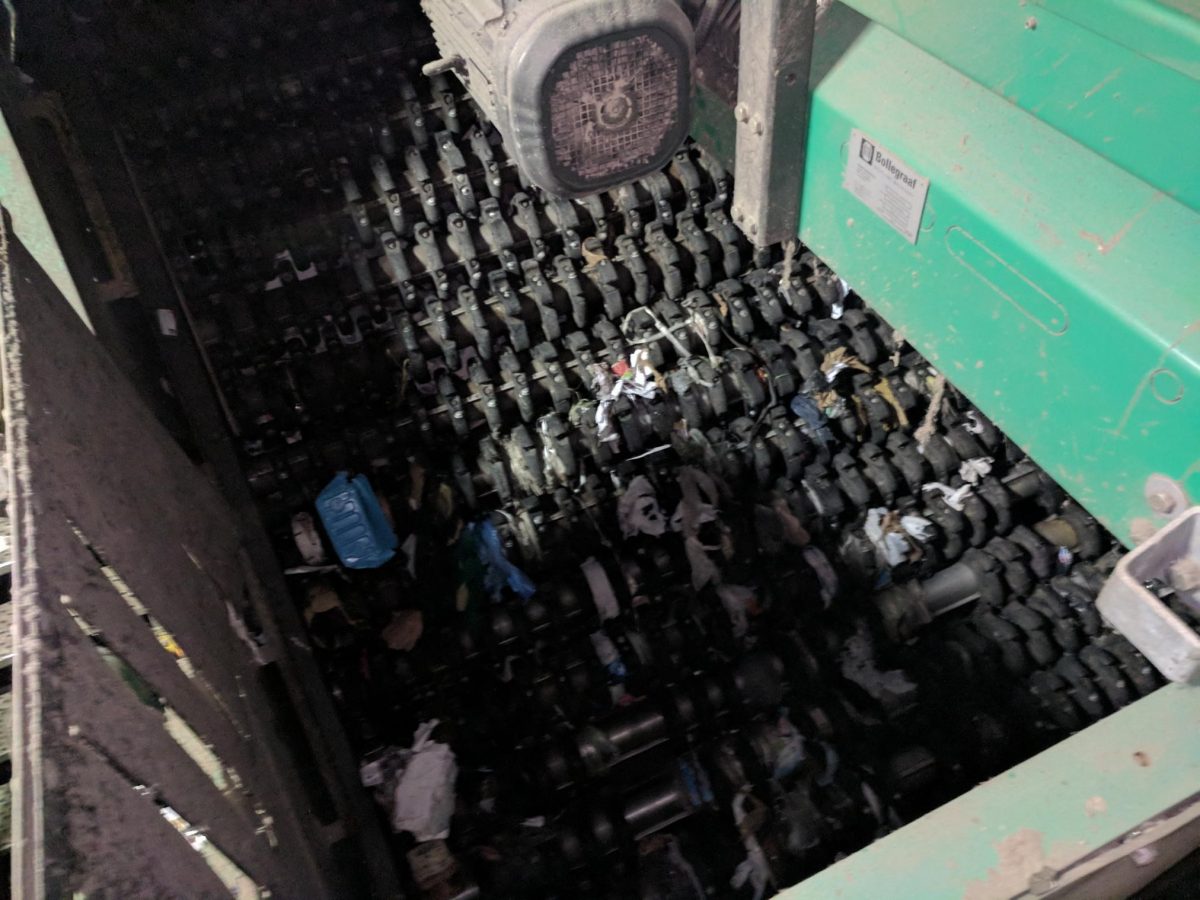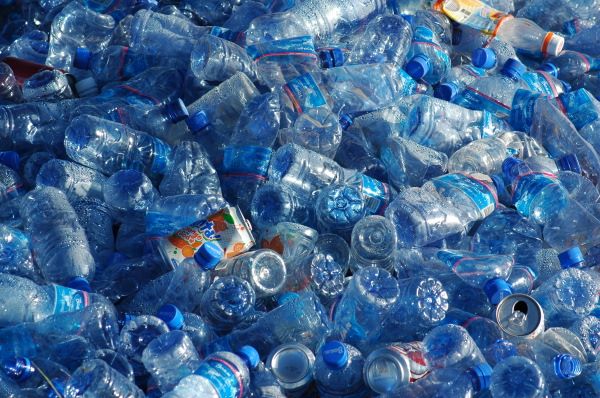The measures put in place in March to curb the spread of COVID-19 have changed how North Carolinians consume and dispose of waste. This is the third installment in a series examining how advocacy organizations, local governments and state agencies are adapting to these changes.
The COVID-19 pandemic has changed how we consume, which is being reflected in the recycling and waste industry.
Supporter Spotlight
The Environmental Protection Agency Administrator Andrew Wheeler in a message encourages Americans to recycle materials from their households to recycle more and recycle right by keeping gloves, masks, other personal protective equipment out of recycling bins and off the ground.
“Businesses that normally recycle large amounts of paper and cardboard aren’t able to do that right now. Because of this, household recycling is more essential than ever. We are all staying home and getting more deliveries in cardboard boxes and generating more material than normal, much of which can be recycled,” according to the EPA. “Recycled materials are key for everything from making new products to boxes to ship products and other essential supplies for the everyday needs of hospitals, grocery stores, pharmacies and American homes. There are critical needs for all raw materials in the manufacturing supply chain, especially paper and cardboard.”
One concern the state Department of Environmental Quality’s Division of Environmental Assistance and Customer Service, or DEACS, has heard from local government and recycling hauler contacts is that contamination in the recycling stream has increased since March.
DEACS Recycling Business Development Specialist Sandy Skolochenko explained in a recent interview that varying factors have led to the contamination problem.
“It ties in to the use of more single-use plastic items and residents placing them in the recycling bin even though most of those items don’t belong. Other factors are more time spent at home and more material generated at the curb,” she said. “In some cases, people are simply using their recycling bin as an overflow trash container. Additionally, unfamiliar materials like gloves and masks are now commonplace in the home and I’m sure there is some ‘wishcycling’ happening with those materials.”
Supporter Spotlight
She explained that wishcycling, also known as aspirational recycling, “happens when you put something into the recycling bin without checking whether it’s actually recyclable.”
The division developed a social media campaign to address COVID-related residential waste to help educate the public about what can and can’t be recycled.

Skolochenko added that she’s heard anecdotally that the commercial waste stream has decreased more than 50% and on the residential side, the Solid Waste Association of America reports that volume has increased 20%.
Big picture, Skolochenko said, is that the waste and recycling stream has shifted during the pandemic from the commercial sector to the residential sector.
“Commercial facilities generate quite a bit of cardboard, so the availability of that material has decreased at a time when manufacturers really need it to make essential items like toilet paper, shipping boxes and packaging for food and medical supplies. So it’s very important that we keep our residential recycling programs intact to keep feeding recycled content into the supply chain,” she said.
Matt James is a DAECS industrial development specialist who focuses on recycling business development.
James also noted that the stream of recyclables that goes to material recovery facilities contains much more residential recyclables since the pandemic has forced more folks to stay home.
“As businesses have reduced their hours, the commercial stream of recycling has decreased. Usually, the commercial stream of recycling is higher value and less contaminated,” he said.
Residents can help reduce contaminating the recycling stream by recycling materials that are actually recyclable such as plastic bottles, tubs, jugs and jars, glass bottles, metal cans, paper and cardboard.
A recent survey from his office showed that 80% of the recycling collected in North Carolina went to a manufacturer in the southeast, about 7% of the tonnage went to states outside the southeast and 13% of North Carolina’s recyclables left the country to be recycled in another country, he said.
“The most common and troublesome contaminant in the recycling stream is still plastic bags. The plastic bags and film tangle up the recycling equipment at Material Recovery Facilities. If people want to recycle their grocery bags, they can take them back to the store, but they should not put them in their recycling cart,” he added.

As for beach towns, the trend he’s noticed is that residents demand recycling despite the struggles with the industry.
“Because coastal towns can be located further from some of the state’s material recovery facilities, towns sometimes have difficulty finding outlets for their materials. We’ve seen some coastal communities drop their recycling program only to bring it back after their residents demand that service. Our office has been working with recycling markets to find sustainable solutions for recycling on the coast,” he said.
Shanna Fullmer, public works director for Dare County, said that trash tonnage has gone up overall 7% since last summer, mostly residential trash versus commercial.
“Recycling has slowed due to departmental challenges along with the closure of private recycle company on Hatteras Island,” she said. The only beach town that unincorporated Dare County manages is Hatteras Island and the closure of private company has presented Dare County with overflow issues as well as contamination issues.
She reiterated that following instructions at recycle yards as to what materials go where is vital to keep the recycling stream uncontaminated. “Recycle only the basics — plastic, glass, cardboard, aluminum cans, steel cans, paper. Many items people want to recycle simply are not recyclable in this area due to lack of markets.”
One beach town that has figured out a way to bring recycling back to its residents is Southern Shores.
Town manager Cliff Ogburn explained that because of changes in the market, Bay Disposal, which hauls the town’s recycling, had been taking the material to an incinerator.
“We are pleased to have worked with Bay to find a way to get back to recycling,” he said in an interview in late August. The town council amended the contract with Bay Disposal Aug. 18 and will now be hauling the recycling, including glass, to Recycling & Disposal Solutions of Virginia, or RDS, in Portsmouth.
Bay Disposal notified the town in December 2019 that the company no longer had a place to deliver collected materials. Since then, Bay has been taking the town’s recycling material to a waste-to-energy facility also in Portsmouth, Virginia.
Bay Disposal cannot place any noncontaminated recycling material in a landfill. The change adds $5,701 to the original annual contract amount of $189,500. The town said it serves about 2,800 homes as part of its recycling contract, according to the town.
Across the board, Ogburn said that while he hasn’t noticed an increase in littering, there is more residential trash and recycling than in years past, “Which makes sense due to more people staying home. It’s also reflected in that trash and recycling costs have increased due to the increased volume.”
Joe Benedetto III, president of RDS Virginia, said he’s looking forward to working with Southern Shores to find creative solutions to the challenges that recycling has, especially with the challenges that COVID-19 has brought.
He explained that RDS is a smaller processor that focuses mostly on recycling, and serves about two dozen local governments in parts of Virginia and is trying to expand to the Outer Banks. He said they take in about 50,000 tons of recycling and about 20,000 tons of trash.
Benedetto said that recycling and the recycling markets have struggled recently with China being out of the recycling market in the Unites States for the last three years — that’s what led to the closure of a lot of recycling facilities. It pushed a lot of the cost structure back toward municipalities. China no longer buying recycling materials contributed to the demise of a lot of recycling programs, especially those on the Outer Banks.
RDS Virginia has been in talks with the state to set up a small facility somewhere closer to the Outer Banks to save on some of the transportation costs, and set up a small operation to do processing.
“The challenge with the Outer Banks is the location and the fact that there really isn’t a dedicated recycling center in that area. And, and that’s partly because of location and partly because of volume,” he said.
His company, having gone through the lack of demand and market, was able “to adjust a little bit over the past few years so that’s at least one big burden that’s been off our shoulders.”
Since March, Benedetto said that because of all the shutdowns, volume on types of paper from commercial and industrial has dramatically decreased and there has been an increase in the material coming out of the households, which makes sense because people are staying at home.
The mixed materials they’re seeing come out of households changed, too. The biggest change is the additional cardboard, which he contributes to the “Amazon effect,” as well as single serve products, tin cans and aluminum cans.
Among the single-serve products he’s noticed an increase in is single-serve plastics, like water bottles, but he said he hasn’t noticed an increase in plastic cutlery.
“It just kind of reflects the shifting of people from an office building to a home,” Benedetto said, and the shift from buying at a store to ordering online and having delivery to your house.

“We have also seen a higher percentage of contamination,” Benedetto said.
He speculated that could be because there’s folks who may not have been actively recycling in the past and are not quite sure what to recycle. He said there have been some gloves and masks but “things like plastic bags and such seem to be a little more prevalent,” he said.
One way he hopes to help lessen contamination in the recycling stream is to put out printed magnets explaining what to distribute to residents. ‘Education is always, in my opinion, the thing that we need to do and continue to do to reduce contamination and improve recycling rates.”
Local and state observations are in line with a recent survey by the Environmental Research & Education Foundation and the National Waste & Recycling Association on how the industry has been affected and how it has dealt with COVID-19 challenges.
The organizations received about 400 responses, mostly from waste haulers, as well as consulting firms, municipalities, government agencies and academic institutions, all of which reported being impacted by the pandemic.
Results indicate that academic institutions were among the most impacted, with government agencies and waste haulers reporting around 90%.
“About 6 out of 10 of haulers/waste managers experienced a decrease in volumes, while nearly 3 in 10 actually managed more material and the remainder were unchanged. This reflects the decline in commercial waste from the closure of offices, retail spaces and restaurants contrasted by the increase in residential waste from being quarantined. Unfortunately, increased volumes do not necessarily translate to attendant rise in revenue as many residential contracts are fixed price,” according to the EREF.
Additionally, close to 70% respondents noted that residential waste was the largest increase, with the remaining consisting of food, yard, commercial, medical, construction and demolition and industrial waste, in that order, while 67% observed a decrease in commercial waste.
Some respondents indicated that there have been changes to recycling, with some being sent directly to the landfill or minimal sorting is taking place, some stopped manual sorting, and others allowed all recyclables to be mixed, stopping all sorting. There were a few instances where recycling was stopped completely.
Respondents observed a decrease in medical waste rather than an increase.
“Anecdotal observations via discussions with medical personnel suggest that while localized COVID-19 ‘hotspots’ could result in increased medical waste volumes, the majority of the U.S. has seen reductions in medical waste,” according to EREF. “Healthcare workers suggest this could be due to a large portion of the population working at home, which may impact the frequency of situations requiring medical care. Elective surgeries were canceled and telehealth services have increased. Many doctors and dentists closed their offices to routine care and are only now beginning to reopen. In addition, COVID-19 patients do not generate significant amounts of medical waste.”
Despite the changes in volume for the different streams, 83% indicated they’re not handling any waste differently.
The Solid Waste Association of America, or SWANA, submitted in July a written statement to the U.S. Senate Committee of Environment and Public Works about the challenges facing recycling in the United States.
The statement is in conjunction with the Committee’s oversight hearing, “Responding to the Challenges Facing Recycling in the United States,” according to SWANA.
SWANA notes in the statement the impact that the COVID-19 pandemic is having on recycling programs and facilities, similar to those being reported by other organizations. There has been a decrease in recovered material from commercial customers such as schools, offices, and stores, meanwhile residential waste and recycling volume increased nationwide in March and April, though it has declined from the peak of about 20% higher than normal, according to SWANA.
SWANA also pointed to operational changes at recycling facilities to keep workers safe, temporary suspension of some curbside collection programs, and additional personal protective equipment provided by employers in response to concerns about exposure expressed by front-line workers.








